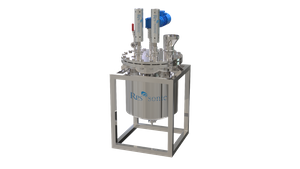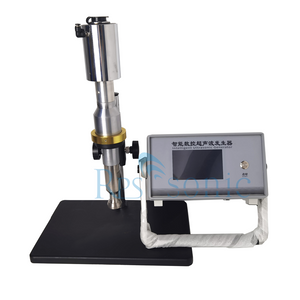Core Principle: How Does Ultrasonic Defoaming Work?
Ultrasonic defoaming technology relies primarily on the physical destruction of foam structures by acoustic energy. Its principle can be broken down into the following steps:
Energy Transfer: Ultrasonic waves of a specific frequency and power propagate through a gas medium (such as air), transferring their vibrational energy to the foam.
Induced Resonance: The foam film has its own inherent vibrational frequency. When the frequency of the incoming ultrasonic wave approaches or coincides with this inherent frequency, resonance is induced.
Structural Instability: Resonance violently shakes and stretches the film, causing it to become thinner and distorted. This violent vibration destabilizes the film, exceeding the limit of its surface tension.
Film Rupture: Ultimately, the severely weakened film ruptures, causing bubbles to coalesce or disappear, thus achieving defoaming.
To use a simple analogy: just as an opera singer shatters a glass with a high note, ultrasound uses the "right pitch" (frequency) to rupture the foam's "film."
Applications of Ultrasonic Defoaming Technology
This technology is not primarily used in household detergents; it has important applications in industrial processes, particularly where foam can pose a serious problem:
Fermentation Industry: Antibiotic, alcohol, and yeast fermentation tanks generate large amounts of foam. If not controlled promptly, it can lead to overflow and contamination. Ultrasonic defoaming is a physical method that eliminates the need for chemical defoamers, thus preventing product contamination.
Chemical Production: Many chemical reactions, such as polymerization, distillation, and extraction, generate harmful foam. Ultrasonic technology can provide real-time, online defoaming.
Wastewater Treatment: Excessive foaming in aeration tanks and sewage treatment systems can compromise treatment efficiency and environmental hygiene. Ultrasonic technology offers an automated solution.
Food and Beverage Processing: During the filling, mixing, and conveying of products such as sauces, syrups, beer, and juice, controlling foam is crucial to ensuring filling accuracy and product appearance.
Coating and Ink Manufacturing: During the production and filling process, foam can cause surface defects and inaccurate filling.
Technical Implementation and System Composition
A typical ultrasonic defoaming system typically includes:
Ultrasonic generator: Provides a high-frequency electrical signal.
Transducer: Converts the electrical signal into high-frequency mechanical vibrations (ultrasonic waves).
Horn: Directly transmits ultrasonic vibrations toward the foam area. Its shape can be designed to suit the application (e.g., rod or flat).
Control system: Automatically adjusts the ultrasonic power and duration based on the amount of foam (detected by a sensor), achieving intelligent defoaming.
Operating Modes:
Non-contact: The ultrasonic radiator is mounted a certain distance above the foam, eliminating contact with the material. This makes it ideal for clean environments (such as food and pharmaceutical applications).
In-line: Installed directly on the pipe or tank wall, it continuously defoams the flowing material.
Advantages:
Efficient and fast: Defoams foam almost instantly.
Clean and pollution-free: This is a purely physical method that requires no chemical defoaming agents and does not alter the product's composition, taste, color, or properties. This is its greatest advantage.
Automated Intelligent Control: Can be linked with sensors to achieve precise control—"operate when bubbles are present, stop when bubbles are absent"—saving energy.
Low Maintenance: No moving parts, long life; only the radiation head needs to be kept clean.
Summary
In summary, ultrasound can be an effective and clean physical defoaming method. It works by using sound wave energy to disrupt the stable structure of foam.

 English
English













